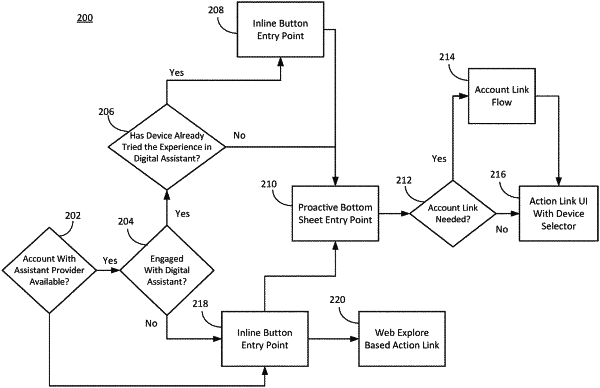| CPC G06F 9/453 (2018.02) [G06F 3/167 (2013.01); G06F 11/3438 (2013.01); G06F 16/245 (2019.01)] | 19 Claims |

|
1. A system to adjust execution of digital actions, comprising:
a data processing system comprising one or more processors to:
load, via a client computing device of a plurality of client computing devices linked to an electronic account:
a script library embedded in an electronic resource, the script library comprising a plurality of call-to-actions for the electronic resource configured for execution by one or more digital assistants provided by each of the plurality of client computing devices, and
a graphical user interface element corresponding to the script library at a location on the electronic resource established by a provider of the electronic resource;
query a digital assistant component to determine a historic level of engagement between the plurality of client computing devices and the one or more digital assistants;
select, based on a first property of the client computing device and the historic level of engagement, a type of digital interface in which to present a call-to-action of the plurality of call-to-actions;
generate, based on the type of digital interface selected based on the first property of the client computing device and the historic level of engagement, a digital interface with the call-to-action;
detect, via the digital interface, an instruction to execute the call-to-action;
determine, responsive to the instruction to execute the call-to-action, a mode of execution for the call-to-action based on a second property of the client computing device and the historic level of engagement;
select, based on the mode of execution, a digital assistant from the one or more digital assistants and a second client device of the plurality of client computing devices to execute the call-to-action; and
transmit the call-to-action to the second client device to cause the second client device to invoke the digital assistant to execute the call-to-action.
|